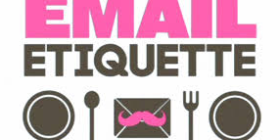Apple’s place atop the music retail food chain gives it an incredible amount of influence. So it’s no surprise that iTunes has 13 entries in this year’s Maximum Exposure survey. The store had a 41% share of the U.S. record business in 2012, according to Billboard’s calculations, and it has a 63% share of digital sales, according to NPD Group. The relatively limited number of ways to reach fans through iTunes makes them highly coveted in the industry.
The most valued position at iTunes is home-page placement. And why wouldn’t it be? iTunes’ home page is the digital equivalent of a CD display near the entrance of a Tower Records. Prime placement all but guarantees people will see your product. But the impact will vary for a number of reasons. A new artist could experience a greater impact than an established one. A new release might be more dependent on placement than a hit with a long shelf life. A hit single may not need placement as badly as a new single that hasn’t yet built momentum. “So many factors come into play, but iTunes placement definitely plays a key role,” says Kelly Rich, Big Machine Label Group senior VP of sales, marketing and interactive.
iTunes positions are increasingly given to artists backed by a comprehensive, compelling plan, according to various record-label sources. Rather than choose a placement based on an artist’s name, reputation or past sales, iTunes considers an artist’s career arc, the promotional campaign employed by the label, and a single’s rollout and performance at radio. The review process is comprehensive and holistic.
Given the way iTunes selects placements, a label must have a good plan in place, DigSin founder/CEO Jay Frank says. “One strong song, no matter how good it is, is not enough. They want to know that you’re creating an artist that will have a regular relationship with iTunes customers.”
Frank has seen the power of iTunes firsthand. DigSin artist Bronze Radio Return had its album land on the Billboard Heatseekers chart during the first week of release after iTunes featured the band as a top new indie rock artist. Daily sales of the band’s song “Further On” were positioned in the iTunes Radio alternative station. “The support has been through multiple weeks, not just the first week of release, which has meant a lot to the group’s sales success,” Frank says.
Labels, artists and managers often highly covet an above-the-fold page placement even though sales analysis says the difference between various placements on the home page is “negligible,” according to one label source. iTunes is said to have a color-coded “heat map” that proves page placement is irrelevant to clicks and sales. Although iTunes doesn’t share this heat map, independent label analysis backs up its claim that page placement is less important than people think.
The numbers behind other promotions, such as a Song of the Day, clearly show their benefit, this person adds. But despite what the numbers say, people in the music industry want to be seen as high on an iTunes page as possible. One marketing veteran offers this explanation: “I think it’s just an ego thing.”
Via Billboard






